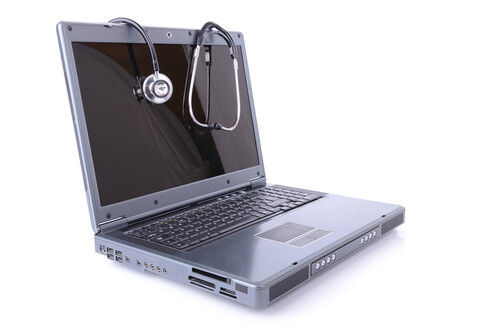 After noticing “tremendous push back and a tremendous need for support” as healthcare organizations face unprecedented demand for electronic medical records (EMR) systems because of the HITECH Act of 2009, Steven Caruso and Sandy Vosk created a new niche for themselves.
After noticing “tremendous push back and a tremendous need for support” as healthcare organizations face unprecedented demand for electronic medical records (EMR) systems because of the HITECH Act of 2009, Steven Caruso and Sandy Vosk created a new niche for themselves.
 After noticing “tremendous push back and a tremendous need for support” as healthcare organizations face unprecedented demand for electronic medical records (EMR) systems because of the HITECH Act of 2009, Steven Caruso and Sandy Vosk created a new niche for themselves.
After noticing “tremendous push back and a tremendous need for support” as healthcare organizations face unprecedented demand for electronic medical records (EMR) systems because of the HITECH Act of 2009, Steven Caruso and Sandy Vosk created a new niche for themselves.
“We’ve spent the last five years supporting companies from a financial position, showing them how they can improve their ROI by properly implementing an EMR system,” says Caruso, president of ImageDoc USA and a 20-year financial industry veteran.
Caruso and Vosk, COO of ImageDoc USA, shared their expertise while leading the latest Online Tech ‘Tuesday at 2’ webinar, How to Achieve Maximum ROI and Patient Satisfaction via EMR. (See video replay and access slides here.)
While the thought of instituting new technology into the workflow has paralyzed some in the industry, Vosk notes it’s the least important part of the equation.
“It’s not about the technology, it’s about managing change,” Vosk said during the 35-minute presentation. “The technology is simply an enabler of change. Eighty-percent of success will be about the people and the process.”
Electronic records are, of course, big business. Caruso cited sources that indicate five billion gigabytes of digital information is created every two days, and businesses spend between $25 and $30 billion each year to capture that information.
But realizing the return-on-investment of EMR begins, Caruso says, when organizations start to break down the cost of paper documents. He cited studies that claim nearly 4 trillion paper documents are being stored by businesses and government agencies and that number is growing at a rate of 22% per year.
Furthermore, companies spend $20 in labor to file a single document, $120 to find a misfiled document and $220 to produce a lost document. And if those files were lost? More than 70% of businesses would fail within three weeks if they suffered catastrophic loss of paper-based records due to fire or floods.
As much as 50 percent of files stored by the typical business office are obsolete, which equates to more than $3,000 wasted each year for every 7,500 obsolete files. And workers spend, on average, a combined 7.4 hours per week searching but not finding information.
In all, studies indicate that lost time spent carrying out inefficient paper document practices equates to nearly $12,000 per employee per year.
There is a paradigm shift taking place as organizations continue to shift from paper-based business practices and toward digital data to reduce costs, improve efficiency and meet compliance requirements. In their presentation, Caruso and Vosk break down the issues driving the change and the risk associated with it.
“We see lots of push back, lots of hesitancy, lots of frustration,” Caruso said. “And when we look at the overall transition, that’s understandable. We’re trying to go from paper-based state, assess all of the risks and comply to all the regulations, while maintaining our profitability and utilizing that digital data.”
Caruso led webinar attendees through three brief case studies of organizations with varying EMR needs. Each of them paid for their imaging requirements by using their storage and labor savings from reducing paper documents and each realized a significant return on investment.
“And the ‘soft benefits’ outweigh the ‘hard benefits,’” Caruso added, noting the organizations’ ongoing reduction of liability, reduction of insurance costs, elimination of time and hassle, reduction of consumables (paper, toner), reduction of real estate, reduction of equipment and labor, and an ability to increase employee focus on clients.
“The benefits are crystal clear,” Caruso said. “Immediate cost reduction and increased profitability, improved operational efficiency, dramatically reduced business risk, strong ROI on the EMR investment, improved patient care and enhanced patient satisfaction.”
Learn more about keeping patient data safe in EMRs and with HIPAA hosting and read our HIPAA Compliant Hosting white paper as it explores the impact of HITECH and HIPAA on data centers.
It includes a description of a HIPAA compliant data center IT architecture, contractual requirements, benefits and risks of data center outsourcing, and vendor selection criteria.
image: EMR/shutterstock







